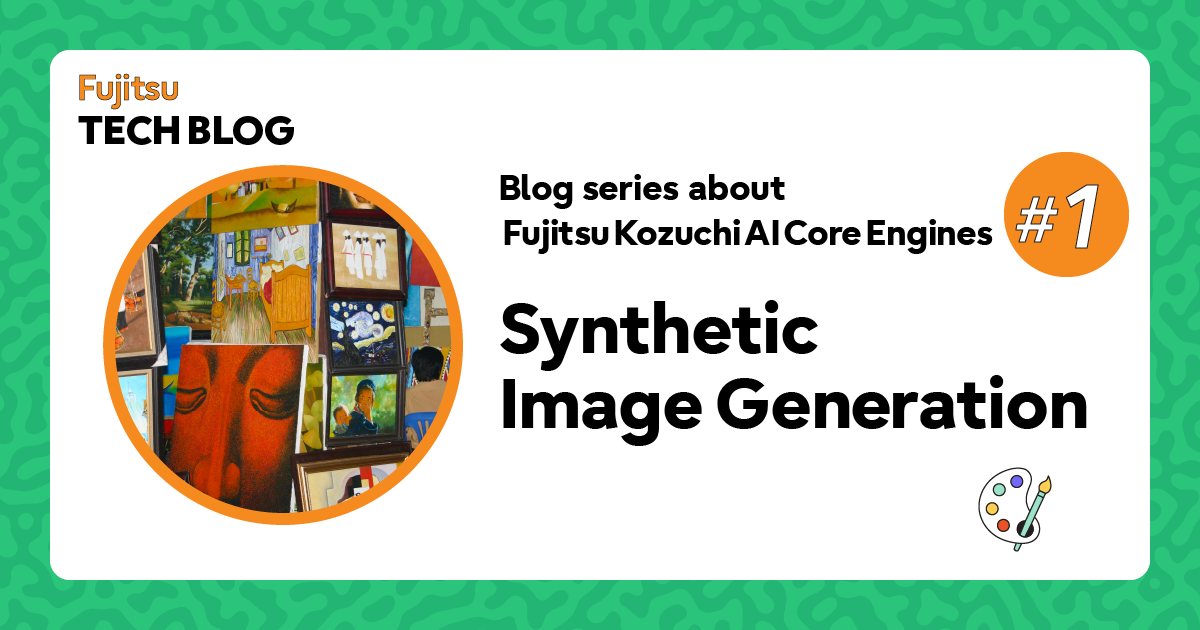 Hello, I'm Chaoliang Zhong from Fujitsu R&D Center Co, Ltd. Today, I would like to introduce an exciting new AI core engine - Synthetic Image Generation – which is now available from Fujitsu Kozuchi (code name) - Fujitsu AI Platform .
Hello, I'm Chaoliang Zhong from Fujitsu R&D Center Co, Ltd. Today, I would like to introduce an exciting new AI core engine - Synthetic Image Generation – which is now available from Fujitsu Kozuchi (code name) - Fujitsu AI Platform .
Synthetic Image Generation enables users to generate images to their desired style. It is one of the AI core engines of Fujitsu Kozuchi, which enables the fast testing of cutting-edge AI technologies developed by Fujitsu.
Creating images to a specific user-defined style using generative AI has been difficult to achieve, especially for non-professional users as different applications need different conditions/requirements to control the style of the output. To overcome this issue, we have developed Synthetic Image Generation.
Benefits of Synthetic Image Generation and how to use it
The principal value of Synthetic Image Generation is that it allows users easily to generate high-quality images to the exact style that they require. This new engine is widely available, both to professional creators of images and animation as well as to non-professional creators. I will explain how to use the engine so that you can understand how it works.
① First, the user prepares their image according to the style they want to generate such as images of a specific creator's work. Just upload that image data and the Synthetic Image Generation will control the AI learning and create the best AI models. At this time, the user does not need to worry about various control parameters.

② Next, you can generate your image using the created AI model. Users prepare the original drawing. It can be a line drawing without color or a colored image. By using this original drawing as the input, the engine generates an image with the unique brush strokes and colors corresponding to the chosen creative style, while keeping the composition of the original drawing.

③ If a user wants to adjust the color tone of a specific part of the generated image, this can be done by simple interactions. In the case of the user wanting to change the color of the background, you just use the brush function to indicate the background, select the color, and then regenerate the image to reflect the modification.

④ Additionally, when generating multiple images, the engine ensures consistent rendering of the generated images. As it applies the same color tone and texture to multiple images, it is possible to create images consistently, which is useful to color a series of images such as animations.
Features of Synthetic Image Generation technology
Synthetic Image Generation uses a Fujitsu’s proprietary framework called StyleControlNet to create images to a user-defined style.
・This framework enables the creation of optimal AI models without needing to apply detailed parameter settings. In summary, the key technology features include :
・easy learning of new styles without forgetting knowledge learned previously. The engine does this by disentangling the condition (e.g., sketch) and style.
・optimum image generation - the engine allows creators to specify their intention via text prompts, color or reference images and then generate or modify an existing image globally or locally.
・By using semantic segmentation, the engine generates images under various conditions (for example, unusual weather or at night time), and by adding these images to the learning data, the engine improves the drawing performance of the AI. In addition, the generated images are helpful to improve performance of downstream tasks, such as semantic segmentation.
・We have optimized the entire generation process to ensure the application of a consistent style in continuous multiple image generation such as webtoon and animation.
Interested in testing the Fujitsu Kozuchi?
This new engine has multiple applications. For example, it can help creators to improve the efficiency of color filling for cartoon image creation or animation. For a demonstration or to testing our new Synthetic Image Generation, please contact us here :